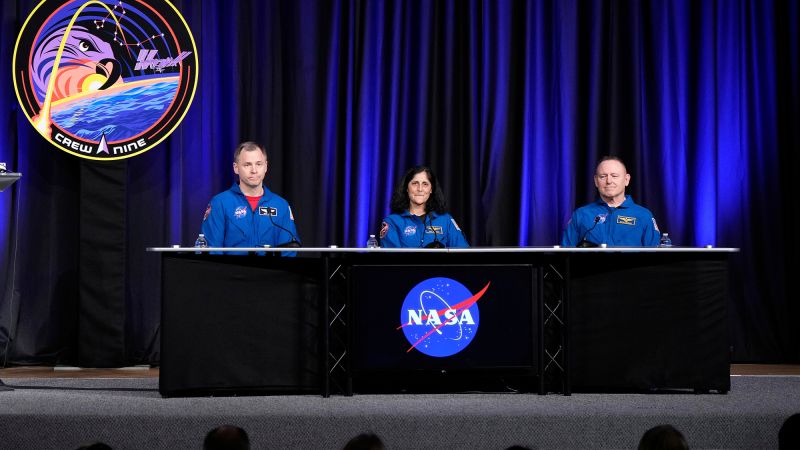NASA astronauts Suni Williams and Butch Wilmore recently held a press conference to discuss their unexpected nine-month mission in low-Earth orbit after their planned week-long stay turned into a significant extension due to technical issues with their Boeing Starliner spacecraft. The astronauts returned to Earth on March 18 and addressed the media for the first time since their homecoming, highlighting their experiences in space and the misunderstandings surrounding their prolonged stay.
The situation garnered significant media attention when technical problems arose during a June test flight to the International Space Station (ISS). As political figures and media representatives characterized their situation with terms such as “abandoned” and “stranded,” both Williams and Wilmore refuted these descriptions during the news conference. They emphasized that they always had a plan and a means to return, pushing back against the narrative that implied negligence on the part of NASA or Boeing.
Williams, Wilmore, and fellow astronaut Nick Hague, who joined them for the Crew-9 mission to return the test flight team, addressed the challenges and lessons learned from their extended stay. Williams expressed relief and gratitude upon returning home, eagerly anticipating hugging her family and pets. She shared her physical readiness by mentioning a three-mile run shortly after landing, which she credited to the intensive training provided by their support team.
Moreover, both astronauts acknowledged the unique nature of flying aboard an untested spacecraft. Although they were prepared for the possibility of complications, the duration of their extended stay was widely unexpected. Williams asserted that while they confirmed their commitment to their roles on the ISS, they adapted their focus to the scientific work they could accomplish, becoming productive crew members alongside the existing astronauts at the station.
The amount of media attention surrounding their mission took Williams and Wilmore by surprise, but they expressed gratitude for the interest shown by the public. Williams highlighted the unity their experience inspired, stating that it was remarkable to realize the level of support they received upon returning to Earth.
Many questions arose concerning the aircraft’s capabilities and the issues encountered. Wilmore reinforced that both they and NASA remained committed to rectifying the challenges faced with the Starliner. He expressed confidence in Boeing and NASA’s dedication to ensure a successful future for the spacecraft, indicating he would fly on it again without hesitation.
Political discussions intertwined with their mission narrative when President Donald Trump and SpaceX CEO Elon Musk claimed credit for expediting their return. Trump and Musk implied that the Biden Administration had allegedly delayed their return for political reasons, a claim that remains unsubstantiated in the public domain. Wilmore acknowledged given the context, he believed in the contributions made by both figures but was adamant in denying any assertions of being abandoned during their time in orbit.
Amidst their journey, both astronauts fostered a sense of duty towards their mission, understanding the importance of their work within the broader framework of national and international space efforts. Williams and Wilmore integrated seamlessly with the station’s operational teams, furthering scientific experiments and contributing positively to their environment.
Additionally, during a recent interview, Wilmore conceded that at times, they felt “stuck,” yet he managed to separate those feelings from the overarching narrative of neglect. Their narrative was further complicated by Musk’s claims of proposing a separate rescue mission that he stated the Biden White House declined, though no evidence currently substantiates this assertion.
NASA officials maintained that the pathways of return for Williams and Wilmore were planned long before the discussions of political expedience surfaced. They confirmed the crew always had a “lifeboat” ready and addressed the importance of vehicle readiness alongside logistical concerns for returning missions. It became clear that the final arrangements for their return to Earth stemmed from pre-established protocols well ahead of political involvement, dispelling claims that suggested negligence in their predicament.
In summary, Williams and Wilmore’s extended mission raised several important discussions surrounding astronaut safety, press narratives, and the operational challenges of space travel. While their experiences added valuable insight into the dynamics of long-duration space missions, they underlined a shared commitment among astronauts, NASA, and their partners to the exploration of space. They returned with stories to tell, rich experiences, and the joy of continuing humanity’s quest for understanding beyond our planet.












